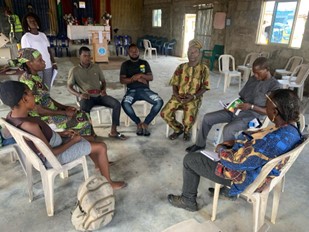Utilization of Heat Early Warning Resources Within Slum Communities in Nigeria

Authors: Olumuyiwa Bayode Adegun (Federal University of Technology Akure), Tobi Eniolu Morakinyo (University College Dublin), Peter Elias (University of Lagos)
This research investigates the use of early warning resources for extreme heat in slum communities in Akure and Lagos in Nigeria. The study was driven by the increasing vulnerability of slum residents to heatwaves exacerbated by climate change. It sought to understand the level of awareness, access, and action based on heat early warning information, while identifying barriers to effective communication and proposing community-based solutions.
Data were collected through community surveys involving 637 participants, focus group discussions, and a 38-day trial of a Community Heat Early Warning System (CHEWS). CHEWS, tested in the communities, showed positive reception but also indicated areas for improvement, including the need for more inclusive communication methods. Residents responded to warnings by adopting basic coping strategies such as drinking more water and reducing outdoor activities, although deeper behavioral changes were limited by financial constraints.
Key Findings
- Low Awareness: Awareness of available heat early warning information was low, with only 36% of respondents having accessed such information. Radio, word of mouth, and TV were the most common sources of information.
- Coping Strategies: The most frequently mentioned actions in response to heat included bathing, wearing light clothing, and drinking more water. However, these actions were often reactive rather than anticipatory.
- Barriers to Effective Use: Access barriers included the infrequency of information dissemination, language issues, and limited access to the required technology.
- Preferred Communication Channels: Residents preferred receiving heat warnings through traditional channels, with radio, SMS, and in-person communication ranked highest. Printed visual materials were also seen as effective, particularly among older and less-educated residents.
- Targeted Groups: The community highlighted the need to target specific vulnerable groups, particularly parents of infants, children, and the elderly.
- Impact of CHEWS: The CHEWS pilot was well received and positively impacted residents' lifestyles and health, though its limited reach became evident. Residents emphasized that beyond raising awareness, access to essential services like water and electricity is critical, as these are necessary for implementing many of the recommended heat precautionary measures.
Read the full paper to learn more.
This research was funded by the Global Disaster Preparedness Center through its small research grants program on inclusive and accessible Early Warning Early Action.
